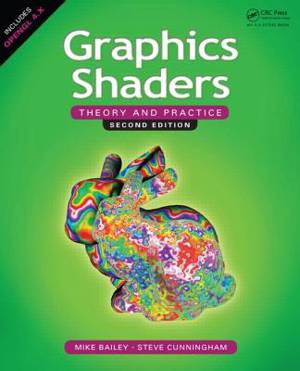
- Retrait gratuit dans votre magasin Club
- 7.000.000 titres dans notre catalogue
- Payer en toute sécurité
- Toujours un magasin près de chez vous
- Retrait gratuit dans votre magasin Club
- 7.000.0000 titres dans notre catalogue
- Payer en toute sécurité
- Toujours un magasin près de chez vous
Graphics Shaders
Theory and Practice, Second Edition
Mike Bailey, Steve CunninghamDescription
Graphics Shaders: Theory and Practice is intended for a second course in computer graphics at the undergraduate or graduate level, introducing shader programming in general, but focusing on the GLSL shading language. While teaching how to write programmable shaders, the authors also teach and reinforce the fundamentals of computer graphics. The second edition has been updated to incorporate changes in the OpenGL API (OpenGL 4.x and GLSL 4.x0) and also has a chapter on the new tessellation shaders, including many practical examples.
The book starts with a quick review of the graphics pipeline, emphasizing features that are rarely taught in introductory courses, but are immediately exposed in shader work. It then covers shader-specific theory for vertex, tessellation, geometry, and fragment shaders using the GLSL 4.x0 shading language. The text also introduces the freely available glman tool that enables you to develop, test, and tune shaders separately from the applications that will use them. The authors explore how shaders can be used to support a wide variety of applications and present examples of shaders in 3D geometry, scientific visualization, geometry morphing, algorithmic art, and more.
Features of the Second Edition:
- Written using the most recent specification releases (OpenGL 4.x and GLSL 4.x0) including code examples brought up-to-date with the current standard of the GLSL language.
- More examples and more exercises
- A chapter on tessellation shaders
- An expanded Serious Fun chapter with examples that illustrate using shaders to produce fun effects
- A discussion of how to handle the major changes occurring in the OpenGL standard, and some C++ classes to help you manage that transition
The authors thoroughly explain the concepts, use sample code to describe details of the concepts, and then challenge you to extend the examples. They provide sample source code for many of the book's examples at www.cgeducation.org
Spécifications
Parties prenantes
- Auteur(s) :
- Editeur:
Contenu
- Nombre de pages :
- 520
- Langue:
- Anglais
Caractéristiques
- EAN:
- 9781568814346
- Date de parution :
- 08-11-11
- Format:
- Livre relié
- Format numérique:
- Genaaid
- Dimensions :
- 201 mm x 236 mm
- Poids :
- 1202 g

Les avis
Nous publions uniquement les avis qui respectent les conditions requises. Consultez nos conditions pour les avis.






